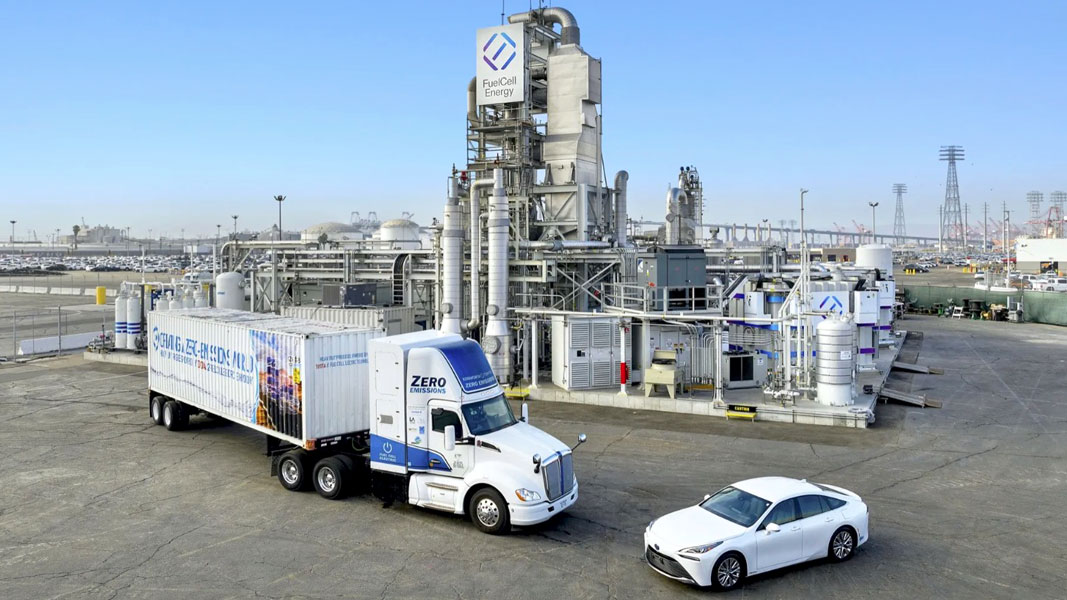Top: New commercial-scale hydrogen production facility at the Port of Long Beach (CA). Photo courtesy Toyota Motor North America, Inc.
According to a February 2024 issue paper released by RMI, “How States Can Use Low-Carbon Fuel Standards To Incentivize Clean Hydrogen-Derived Fuels,” the federal government has recently made some huge investments in domestic hydrogen production, including $7 billion for Hydrogen Hubs, $1 billion for planned hydrogen procurement, and the 45V Hydrogen Production Tax Credit, “which is worth up to $3/kilogram for the cleanest hydrogen.” The issue paper notes that “federal policies largely avoid determining where all this new hydrogen gets used,” and suggests that “states can complement federal leadership by putting in place incentives and guardrails to ensure clean hydrogen is put to its highest and best use.” One recommended policy tool that states can use for this task is the low-carbon fuel standard (LCFS), e.g., the California LCFS, which is a stimulus for production of renewable natural gas (RNG) derived from anaerobic digestion and landfill gas. An example of a hydrogen production project is Toyota and Fuel Cell Energy’s new tri-generation plant at the Port of Long Beach, California. Toyota’s Mirai fuel cell vehicles come into the port, which need to be fueled before being delivered to dealers. Toyota is also demonstrating use of hydrogen fueled heavy-duty trucks at this location. The facility is using directed RNG from landfill gas to produce up to 2.3 MW of renewable power that is off-taken to support Toyota’s operations at the port.













